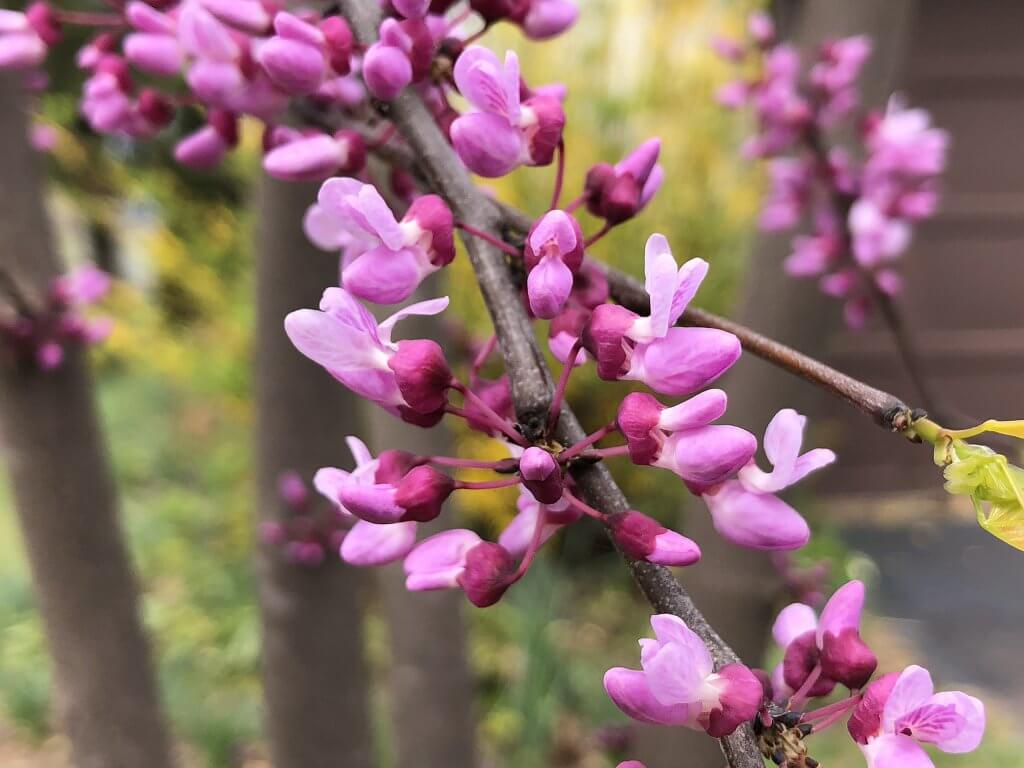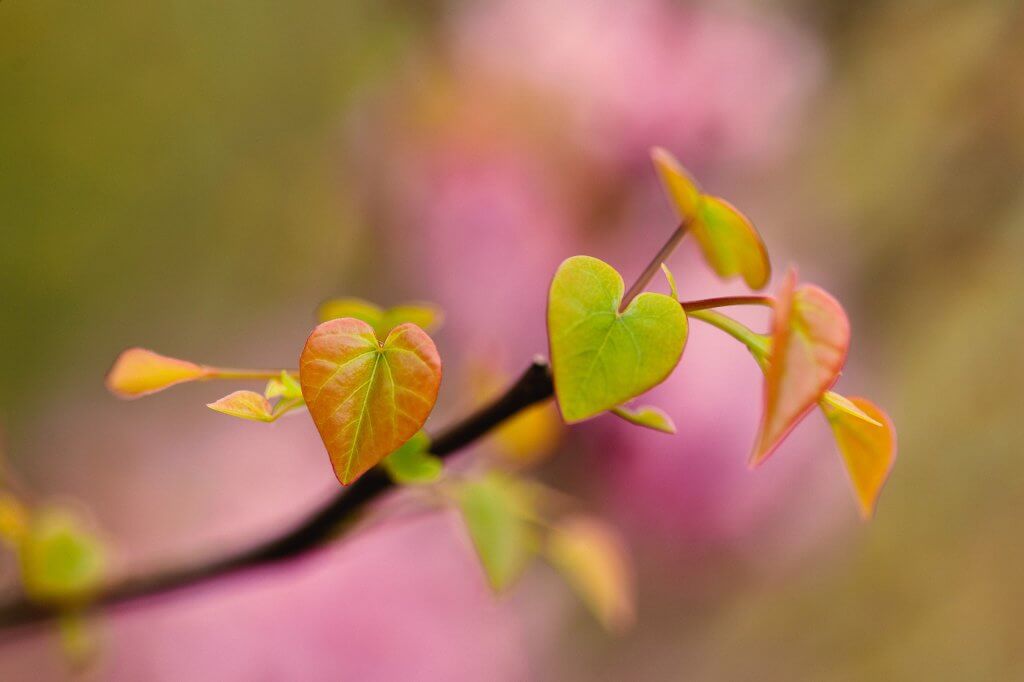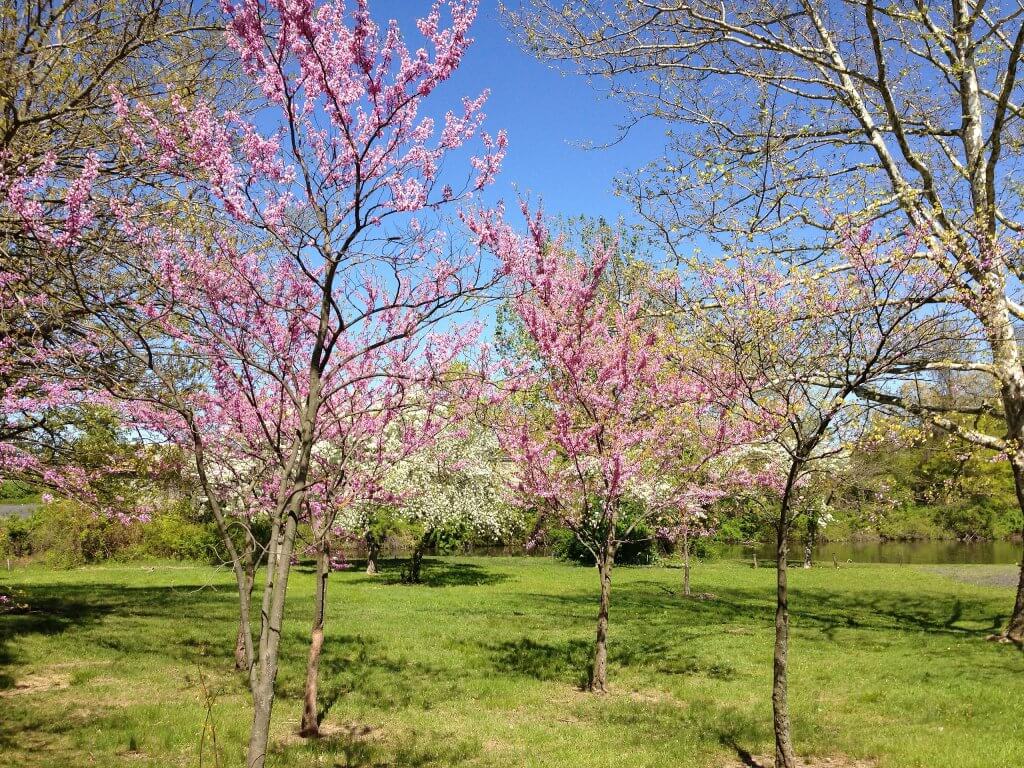Redbud (Cercis canadensis), is a small species of tree that grows right across the States. It is endemic to the northeast, and the largest populations are found here and in the midwest. However it has slowly spread throughout the states and can now be found as far west as Nevada and California. Due to its native range it is also frequently referred to as the eastern redbud.
They grow wild within diverse woodlands and forests, and due to its shorter size it will often be found within the partial shade of other taller trees. They need moist, but well drained soil, which is why they tend to feature more heavily in areas with a higher rainfall.

You’ll usually find a redbud growing no taller than about 10m, with a slightly wider spread of branches. The majority of the height is in the branches, as the trunk rarely reaches over 2m. It bears dark, simple velvety looking leaves in the shape of a heart. The flowers are bright and bold, with petals emitting a deep shade of pink. These blossoms appear in early spring, before the leaves, with small clusters of flowers clutching to the stems and branches of the tree.
Edible parts and other uses
The beautiful pink flowers, young seed pods and young buds of redbud are all edible. They each have a mild, sweet flavor and a crisp texture. The flowers can be sprinkled into a salad, used as a garnish or even baked into cookies or cakes. The young leaf and flower buds can also be added into a stir fry, salad, or even lightly sautéed with other greens as a vegetable side dish.
The long seed pods, when young and purple, can also be plucked from the tree. These make a brilliant addition to a stir fry, or when finely chopped, they can be added to dressings and dips.
Due to its beautifully showy blossoms, you’ll see redbud featuring as a landscape plant in many gardens. As a deciduous tree, when fall sets in, the leaves also turn into a beautiful display of fall colors.

Cautions
The redbud is considered a great wild edible for beginners to forage. The flowers once identified using photos are very recognisable, as is the general shape and height of the tree. No poisonous lookalikes exist, so redbud is a fantastic food to forage.
Foraging
The flowers and buds can be picked straight from the branches in spring, however be sure not to over harvest. Leave some behind for other foragers, and to allow for pollination and growth. The flower buds before opening are usually a deeper pink, and have an oblong, tulip like shape. They tend to have the best flavor when they are just starting to open.
Because of their popularity as landscape plants, you are likely to spot redbuds along sidewalks, public land and parks. This means foraging doesn’t need to take you out into the middle of a forest, you are likely to find a great local supply.

Did you know…
The flowers of redbud are a very important early food source for long-tongued bees. The flowers being too enclosed and deep for normal bees to reach and pollinate.
Conclusion
The redbud is a beautifully ornamental tree that would be a fantastic addition to your yard. As well as displaying an array of colors throughout spring and fall, you could also use it as a source of food. The flowers in particular are nutritious, with a high amount of vitamin C and anti-oxidants. With their mild floral flavoring, and a taste not unlike peas, they are a fantastic ingredient to use in the kitchen!
—————Written by Hannah Sweet
Hannah is a freelance writer and graphic designer from the UK. With a penchant for travelling, photography and all things botanical, she enjoys writing about a wealth of topics and issues, from conservation and slow living, to design and travel. Learn more about her writing and design services at www.sweetmeanders.co
Many of our readers find that subscribing to Eat The Planet is the best way to make sure they don't miss any of our valuable information about wild edibles.
See our privacy policy for more information about ads on this site







One Response
I loved this article. Do you know if the Weeping Redbud tree flowers are also edible, or would it just be the Eastern Redbud that can be eaten? I am considering placing a Weeping variety in my garden. Thank you!